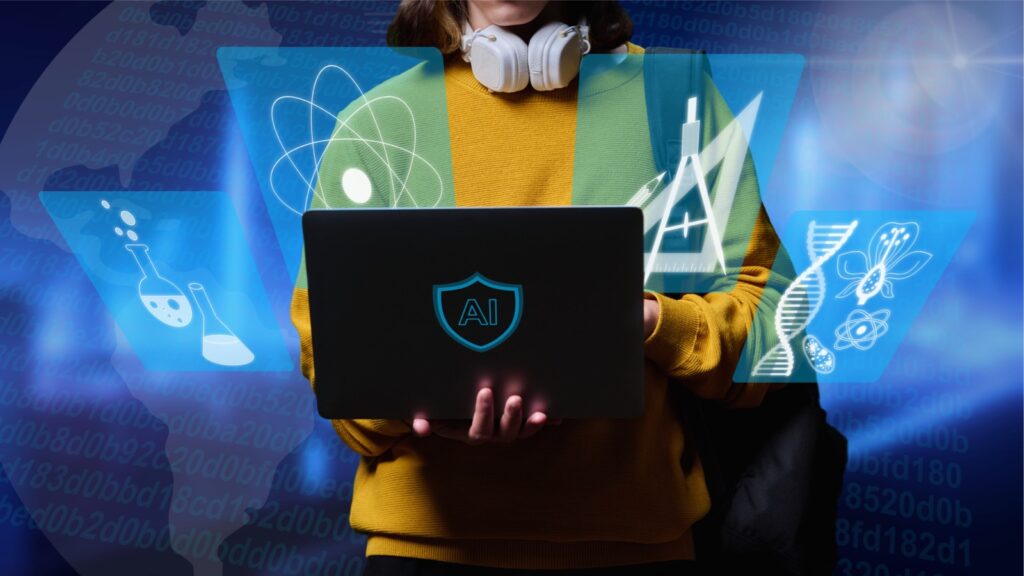In many Nigerian schools, a silent revolution is underway in classrooms and staff rooms alike. Teachers, long bogged down by excessive paperwork, endless forms and manual record-keeping, are now exploring artificial intelligence (AI) tools — especially those that assist note-taking — as a way to reclaim time and energy. The promise: less admin, more teaching. The reality: mixed successes, real challenges, but growing momentum.
Table of Contents

The Administrative Load Teachers Face
For decades, Nigerian educators have juggled more roles than many outsiders realise. Apart from lesson delivery, they fill in attendance registers, maintain student performance logs, prepare reports for parents and school boards, draft follow-up action plans, handle disciplinary records, collate feedback, and often chase documentation with manual records.
These tasks, while essential, consume vast amounts of time. Teachers frequently complain that the administrative overhead eats into preparation, marking and more importantly, time with students. Burnout, frustration and job dissatisfaction are not rare. In interviews, several teachers pointed out that many administrative duties duplicate each other, rely on physical forms that get lost, or require repetitive data entry that could easily be automated.
How AI Note-Taking Helps
Enter AI note-taking tools. These include software that can listen to classroom interactions (lectures, discussions, even student questions), transcribe what is said, identify key points, flag follow-ups, generate short summaries, draft emails or notices, and help organise information. Some tools also automate routine tasks like attendance, behaviour tracking or making reminders based on classroom events.
In Nigeria, early adopters are starting to use such tools for a variety of purposes:
- Classroom transcription and summarisation: Teachers use tools that can capture audio or speech, convert to text, then highlight critical items like homework, project deadlines or student questions. This allows them later quickly to revisit what was said without manually reviewing recordings or notes.
- Parent-teacher communication: Instead of manually writing or typing parent letters or feedback, AI tools suggest draft messages based on class events or observations. Teachers then fine-tune them, saving valuable time.
- Disciplinary and behavioural tracking: When a student raises their hand often, asks insightful questions, or conversely misbehaves, AI tools can log these instances automatically. That helps in records for parent meetings, referrals, or in designing interventions.
- Administrative report generation: Summaries for principals or school authorities — such as attendance trends, performance summaries, and classroom event logs — can be generated by aggregating data captured via AI, rather than relying on manual collation.
Some teachers report that they now save 20-30% of the time they formerly spent on paperwork, freeing that time for lesson planning, student interaction, or personal well-being.

Barriers, Realities & What’s Needed for Wider Adoption
While the advantages are attractive, the path to large-scale adoption in Nigeria is uneven, with some real obstacles.
Infrastructure & Access
- Electricity and Internet Connectivity: Many schools (especially in rural areas) still suffer from unreliable power supply. AI tools, especially those relying on cloud computing or real-time transcription, need stable power and adequate internet bandwidth. Without these, they can’t function properly or at all.
- Cost of Tools & Devices: Many AI note-taking tools (or full-featured AI assistants) require subscriptions, good microphones or recording devices, and possibly cloud storage fees. For many public schools and underfunded private schools, budgets are tight. Even where the tools are affordable, a lack of funds for devices (smartphones, tablets, computers) can limit access.
Awareness & Training
- Low Awareness: Many teachers and school administrators are simply not aware that such tools exist, or underestimate what they can do. Research in certain Nigerian regions shows that awareness of AI tools among school leaders is still low.
- Technical Skill Gaps: Even when tools are available, many teachers feel under-prepared. They may lack training in using AI-driven note-taking software, managing digital records, or integrating these tools into their workflow. Without support, initial enthusiasm often fades.
Institutional & Policy Constraints
- Resistance to Change: Traditional systems of record-keeping, existing school policies, and sometimes scepticism about digital tools, privacy, or reliability can slow adoption. Some educators worry that reliance on AI might reduce human judgment in assessments or relationships.
- Data Privacy and Security: Audio recordings of classrooms, student behaviour logs, or parent-teacher communications stored in the cloud raise questions of data protection, student consent, and who owns the data. Without clear guidelines or policies, many schools err on the side of caution and avoid tools that might expose them to risk.
- Government and Regulatory Support: Schools often need regulatory clarity, budgetary support, and policy frameworks to adopt AI tools safely and sustainably. At present, many regions lack such formal support, so schools adopt an ad hoc, piecemeal basis.
Looking Forward: Recommendations & Best Practices
To ensure that AI note-taking becomes a sustainable tool in easing administrative burden — not just a buzzword or short-term experiment — several steps are crucial.
- Pilot Programs & Case Studies
Schools and educational authorities should run well-documented pilot programs in diverse settings (urban, peri-urban, rural) to demonstrate benefits, collect feedback, and iterate on what works. Success stories from such pilots help convince others. - Training & Capacity Building
Workshops, hands-on training, and peer mentoring should be provided so teachers and administrators are comfortable with the tools. Not just how to use them, but also best practices for integrating them into school routines. - Affordable Tools & Device Access
Organisations (government, NGOs, private sector) should partner to subsidise or provide low-cost devices and software licences specially adapted to low-resource environments. Open-source solutions might be part of the answer. - Policy, Standards & Data Protection
Clear guidelines are needed from educational authorities about privacy, acceptable use, data storage, consent and security. Regulatory frameworks help schools adopt tools confidently. - Hybrid Human-AI Systems
Recognise that AI does not replace the teacher but supplements them. The best results tend to come when AI tools handle routine, repetitive tasks, freeing human educators to focus on planning, interaction, creativity and mentoring. - Equity Across Regions
Attention must be paid to ensure rural or under-resourced schools are not left behind. Solutions must be tailored to the environment: low-bandwidth modes, offline capabilities, and local support.

Conclusion
Across Nigerian education, the potential for AI note-taking tools to reduce administrative burden is no longer theoretical — teachers are already seeing real gains in efficiency, clarity, and time saved. Yet the journey toward broad, equitable integration remains challenging. Addressing infrastructure gaps, increasing awareness and skills, ensuring supportive policy frameworks, and carefully managing data privacy will be key.
If these pieces come together, AI note-taking could transform teaching in Nigeria: allowing educators to shift from paperwork to pedagogy, from form-filling to formative engagement. Ultimately, that means more lessons, more student-teacher interaction, more innovation, and less exhaustion.
Join Our Social Media Channels:
WhatsApp: NaijaEyes
Facebook: NaijaEyes
Twitter: NaijaEyes
Instagram: NaijaEyes
TikTok: NaijaEyes
READ THE LATEST EDUCATION NEWS















![Mr Macaroni Drops Blistering Remark: ‘APC Filled with Most Corrupt People’ as He Slams Tinubu’s Controversial Pardon for Criminals=]] Mr Macaroni](https://naijaeyesblog.com/wp-content/uploads/2025/03/Mr-Macaroni-1-1-180x135.avif)
























